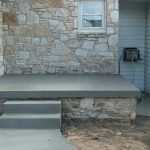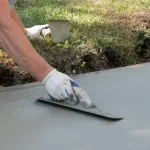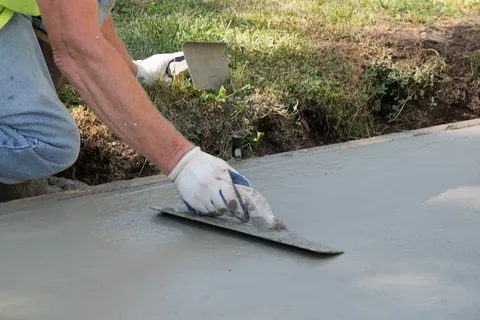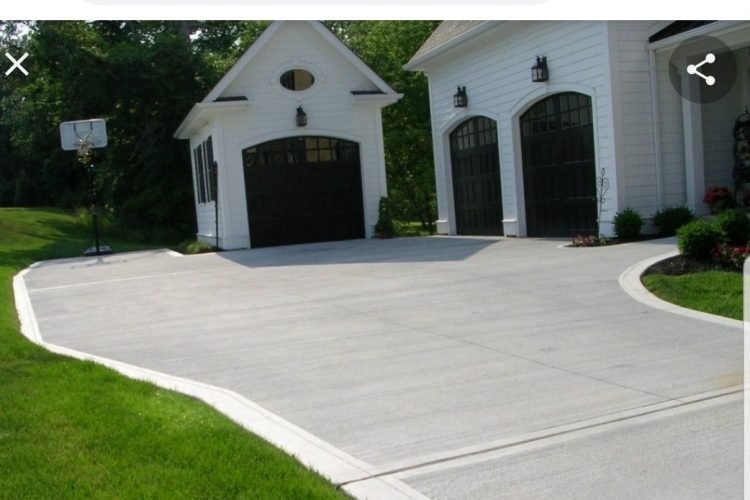
Concrete pads and slabs play a crucial role in modern construction, serving as the foundation for countless residential, commercial, and industrial projects. From driveways and patios to garage floors and building foundations, these durable structures provide stability, longevity, and a clean finish. Installing concrete pads and slabs requires proper planning, the right materials, and professional expertise to ensure long-lasting performance.
In this blog, we’ll explore what concrete pads and slabs are, their uses, the step-by-step installation process, and the benefits of choosing this durable building solution.
What Are Concrete Pads and Slabs?
A concrete pad is typically a flat, horizontal surface made of poured concrete, used for supporting smaller structures like sheds, HVAC units, or outdoor equipment. On the other hand, a concrete slab is a larger version often used as the base for garages, patios, driveways, or even entire buildings. Both are reinforced with steel or mesh to increase strength and prevent cracking.
Common Uses of Concrete Pads and Slabs
Concrete pads and slabs are versatile and widely used in various projects, including:
- Residential Projects: Patios, walkways, garage floors, basement floors, and outdoor living spaces.
- Commercial Applications: Parking lots, warehouse floors, loading docks, and industrial equipment foundations.
- Outdoor Installations: Hot tub bases, air conditioner platforms, garden sheds, and play areas.
- Structural Foundations: Serving as the base for homes, extensions, and commercial buildings.
Their adaptability makes them a go-to solution for contractors and homeowners alike.
The Installation Process
Proper installation is key to ensuring that concrete pads and slabs remain durable and crack-free over time. Here’s a detailed look at the step-by-step process:
1. Planning and Design
The first step is determining the purpose of the slab or pad. Factors such as size, thickness, load-bearing requirements, and location must be considered. For example, a driveway slab may need to be thicker than a patio to withstand vehicle weight.
2. Site Preparation
The installation area is cleared of debris, vegetation, and topsoil. A stable base is essential, so the soil is leveled and compacted to prevent future settling or shifting.
3. Formwork Installation
Wooden or metal forms are set up around the perimeter to create a mold for the concrete. The forms ensure the slab or pad maintains the correct shape, size, and thickness during the pour.
4. Base Layer and Reinforcement
A layer of gravel or crushed stone is often added for drainage and stability. Reinforcement such as steel rebar or wire mesh is placed within the forms to increase the slab’s tensile strength and reduce cracking.
5. Pouring the Concrete
Concrete is mixed and poured evenly into the forms. Depending on the project, ready-mix concrete may be delivered by truck for larger slabs. During this stage, it’s crucial to ensure proper distribution and avoid air pockets.
6. Leveling and Finishing
Once poured, the concrete is leveled using a screed. Finishing tools like floats and trowels are used to smooth the surface. Decorative finishes, textures, or stamping can also be applied for aesthetic appeal.
7. Curing
Curing is one of the most important steps. Concrete must be kept moist and protected from extreme temperatures for at least 7 days. This allows it to gain strength gradually and reduces the risk of surface cracking.
8. Sealing
Applying a concrete sealer provides an added layer of protection against moisture, chemicals, stains, and wear, extending the lifespan of the slab or pad.
Benefits of Concrete Pads and Slabs Installation
- Durability
Concrete is one of the strongest building materials, capable of withstanding heavy loads and resisting wear and tear. Properly installed slabs can last decades with minimal maintenance. - Low Maintenance
Compared to alternatives like wood or asphalt, concrete requires little upkeep. Occasional sealing and cleaning are usually sufficient to maintain its appearance and strength. - Versatility
Concrete pads and slabs can be tailored to fit various needs, whether structural support, outdoor living spaces, or decorative finishes. - Cost-Effectiveness
Although the upfront cost may be higher than some materials, the long lifespan and minimal maintenance make concrete a cost-effective solution in the long run. - Energy Efficiency
Concrete slabs used in flooring can help regulate indoor temperatures by absorbing heat during the day and releasing it at night, contributing to energy savings. - Customization Options
From stamped patterns and exposed aggregate to colored finishes, concrete can be customized to enhance curb appeal and match any design style.
Tips for a Successful Installation
- Hire Professionals: While small pads may be DIY-friendly, larger slabs should be installed by experienced contractors to avoid costly mistakes.
- Consider Climate: Temperature and weather conditions play a big role in concrete curing. Avoid pouring in extreme heat or freezing conditions.
- Reinforce Properly: Don’t skip reinforcement, especially for load-bearing slabs like driveways or garage floors.
- Plan for Drainage: Ensure proper slope and drainage to prevent water pooling, which can lead to cracks or erosion.
- Maintain Regularly: Clean spills quickly, reseal as needed, and inspect for cracks to keep your slab in top condition.
Cost of Concrete Pads and Slabs Installation
The cost of installation varies based on size, thickness, reinforcement, and finishes. On average:
- Concrete Pads: Smaller pads for sheds or equipment can range from $5 to $10 per square foot.
- Concrete Slabs: Larger slabs, such as patios or garage floors, may range from $6 to $12 per square foot, depending on complexity and decorative finishes.
While costs vary, investing in quality materials and professional installation ensures long-term value.
Why Choose Concrete for Your Next Project?
Whether you’re building a backyard patio, installing a new garage floor, or preparing a foundation for a commercial building, concrete pads and slabs provide unmatched strength, stability, and design flexibility. They offer a reliable foundation that stands the test of time, making them a smart choice for both residential and commercial applications.
By following proper installation techniques and investing in professional expertise, you can enjoy the long-lasting benefits of a well-installed concrete pad or slab for decades to come.
Conclusion
Concrete pads and slabs are essential elements of construction, offering a strong and durable foundation for countless projects. Their versatility, cost-effectiveness, and low maintenance needs make them a preferred choice for homeowners, contractors, and businesses alike. From preparation to curing, each step of the installation process is crucial to ensure quality and longevity.
If you’re considering a project that requires a stable and long-lasting base, concrete pads and slabs installation is the solution you can trust.






